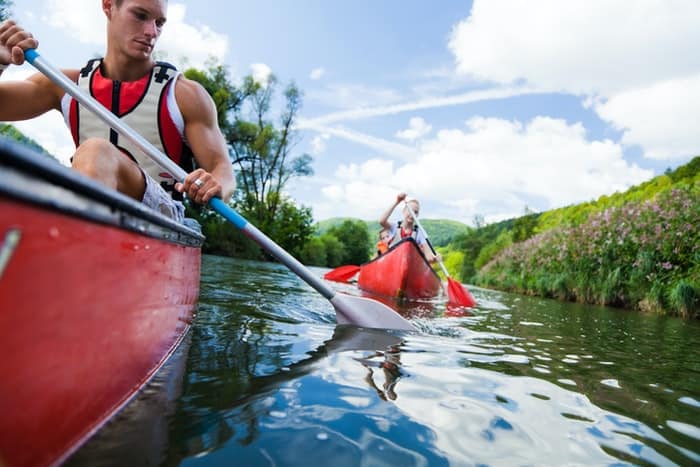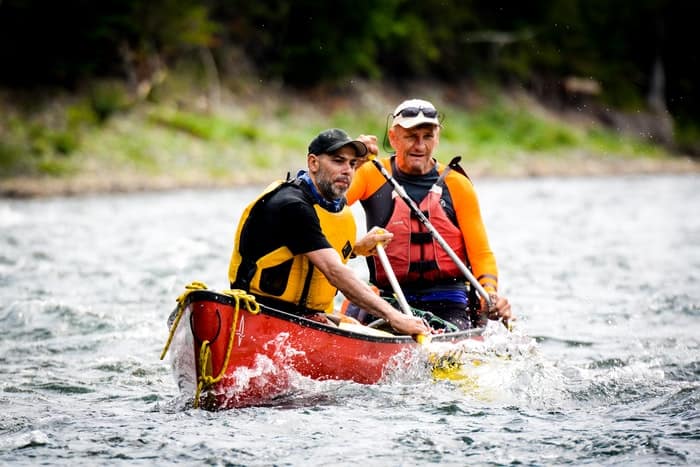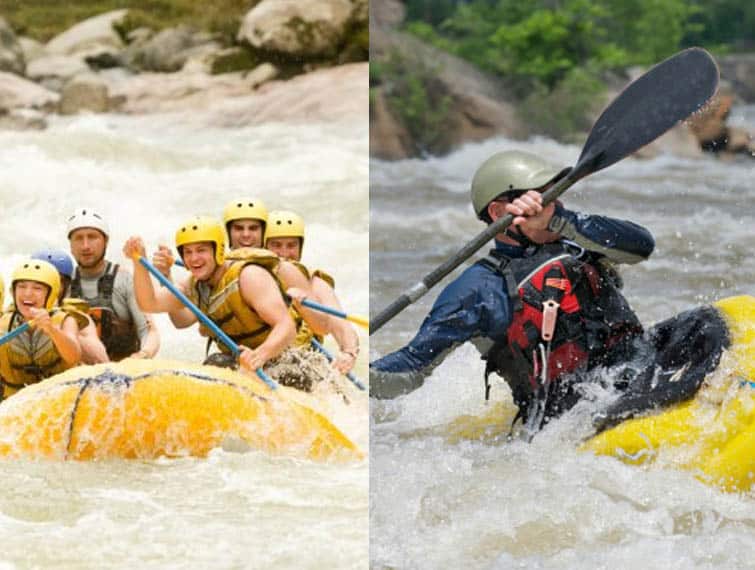Canoeing is a popular recreational activity enjoyed by many people. While canoeing is generally considered to be a safe activity, some people may be concerned about canoe stability. In particular, novice canoeists may be worried that they will tip over their canoe and get wet.

Factors that Affect Canoe Stability
Canoeing is a popular water activity, enjoyed by people of all ages. While it may seem easy to paddle a canoe, there are many factors that affect its stability. These factors can be divided into two categories: intrinsic and extrinsic. Intrinsic factors are those that are inherent in the design of the canoe, while extrinsic factors are those that depend on the environment and the paddler’s technique.
Intrinsic factors that affect canoe stability include the shape of the canoe, the width of the canoe, and the depth of the canoe. A narrower and deeper canoe is more stable than a wider and shallower one. The shape of the canoe also affects its stability. A canoe with a curved bottom is more stable than one with a flat bottom.
Extrinsic factors are those that depend on the environment and the paddler’s technique. These factors can affect the boat’s speed, direction, and stability. The environment includes things like the current, wind, and waves, while the paddler’s technique includes their posture, stroke, and use of braces.
3 Most Common Causes of Canoe Tippiness
There are many reasons why a canoe might become unstable and tip over, but some causes are more common than others. Here are three of the most common reasons for canoe tippiness:
Incorrect Weight Distribution
When canoeing, it is important to ensure that your weight is evenly distributed in the boat. If not, the canoe can become unstable and tippsy. There are several factors that can contribute to incorrect weight distribution, including:
Fun Outdoor Quiz
- Sitting too far forward or too far back
- Not keeping your weight low
- Carrying too much gear in the front or back of the canoe
- Paddling with excessive power or speed
If you find that your canoe is constantly tipping, take a look at your positioning and try to make some adjustments. Move your body closer to the center of the boat, and make sure that all of your gear is stowed away safely. When paddling, use a gentle touch and avoid putting too much power into each stroke.
Incorrect Buoyancy
Canoes are often tippy because their buoyancy is not evenly distributed. If a canoe is loaded too heavily on one end, it will become top-heavy and unstable. This can be caused by anything from a heavy passenger to a load of camping gear.
Incorrect buoyancy can also be caused by poor design or construction. For example, if the bottom of the canoe is not flat or if the sides are too curved, it will be more difficult to keep it stable.

Improper Boat Design
Canoes are often tippy because their design does not take into account the ways in which they will be used. For example, canoes are often too wide for use on calm waters, which causes them to rock more than necessary.
Additionally, the weight of the canoe and the person or people inside it is not evenly distributed, which can cause the boat to tip over. These problems can be solved by designing canoes that are narrower and lighter, and that have a more even distribution of weight.
Solutions to Canoe Tippiness
One of the biggest problems with canoes is that they are often tippy. This can make it difficult to stay in the boat and can lead to accidents. There are a few different solutions to this problem.
Add More Weight to The Canoe
When canoeing, there is always a chance of the canoe tipping. This is especially true when there is less weight in the front of the canoe. One way to counteract this and make the canoe more stable is by adding weight to the back of the canoe. This can be done by placing a heavy object in the back or by sitting on a bag of sand or water.
Sit in The Middle of The Canoe
When a canoe begins to tip, it’s important to act fast and get back into the center of the canoe. Re-balancing the canoe can be done by paddling on opposite sides or by shifting your weight. If you’re in a solo canoe, shifting your weight can be done by scooting to the middle of the canoe. There are several solutions to canoe tippiness, but remember that prevention is key. Stay aware of your surroundings and keep an eye on the water level inside your canoe.
Use a Stabilizer Bar
When canoeing in open water, motion sickness and the risk of capsizing can be a problem. One way to reduce these risks is to use a stabilizer bar. This simple device attaches to the canoe and helps keep it from tipping over.
A stabilizer bar is a long, thin piece of metal or plastic that attaches to the side of a canoe. It is designed to keep the canoe from tipping over in windy or rough conditions. When properly installed, it can provide a lot of stability and peace of mind for the paddler.
There are several types of stabilizer bars available on the market. Some are made from metal while others are made from plastic. They come in a variety of shapes and sizes, so it is important to select one that is compatible with your canoe.
Conclusion
In conclusion, there are many factors that affect canoe stability. Understanding these factors and how they work together is crucial to safe and successful paddling. Paddlers should always be aware of their surroundings and take caution when conditions are unfavorable. With practice and awareness, canoeists can safely enjoy this popular outdoor activity.







